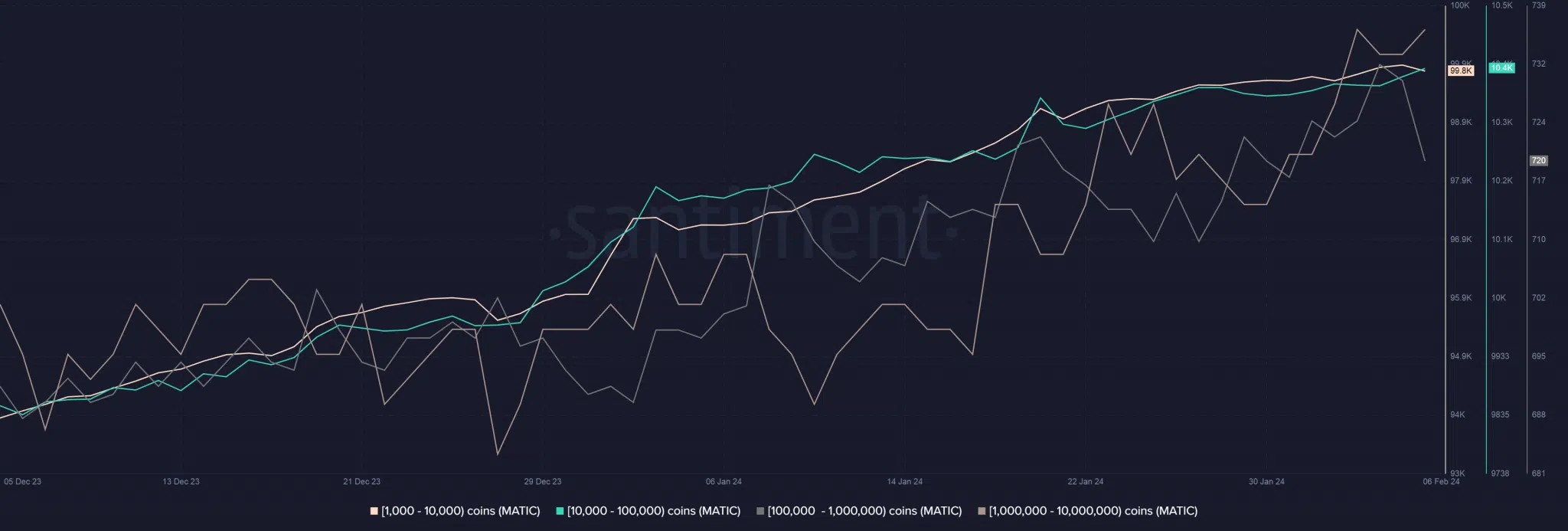Proof-of-Stake (PoS) network Polygon (MATIC) saw a significant increase in on-chain activities last week. According to Artemis data analysis, Ethereum’s (ETH) scaling solution reached a total of 3.41 million transactions on February 1st, surpassing BNB Chain and becoming the second-highest in transactions following Solana (SOL).
Active Address Count on Polygon
A closer examination revealed that Polygon has been averaging 3.5 million transactions daily since the beginning of February. On the same day, Polygon overturned Solana in the daily user count with over 672,000 unique active addresses compared to Solana’s 644,000. Polygon’s rising graph has been a significant topic in the media in recent weeks, with daily active addresses showing a 75% increase over the last two months, and the Inscriptions craze playing a key role in boosting user engagement.
Inscriptions also contributed to the growth of Polygon’s NFT market. According to CryptoSlam data analysis, Polygon’s monthly NFT sales increased nearly sixfold from October to January. In fact, Polygon made a first by overturning the traditional powerhouse Ethereum (ETH) in 24-hour NFT sales last month. At the time of writing, Polygon was the fourth-largest chain in terms of NFT trade, with over 8 million dollars in cumulative sales last week.

Analytics Reports on MATIC
According to CoinMarketCap, the ecosystem’s native token MATIC experienced a 3.72% decrease at the time of writing. However, on the weekly chart, the 14th largest cryptocurrency reported approximately a 6% gain. MATIC lost the psychologically important 1 dollar level shortly after the start of 2024 and has not been able to reclaim it. The cryptocurrency has shown an 18% decrease since the beginning of the year. According to Santiment data analysis, the number of addresses holding between 1,000 and 10 million tokens increased significantly last month. In contrast, most traders believed in a price decline for MATIC in the derivatives market. Coinglass data showed that in the last two days, the number of short positions increased sharply compared to long positions.

 Türkçe
Türkçe Español
Español










